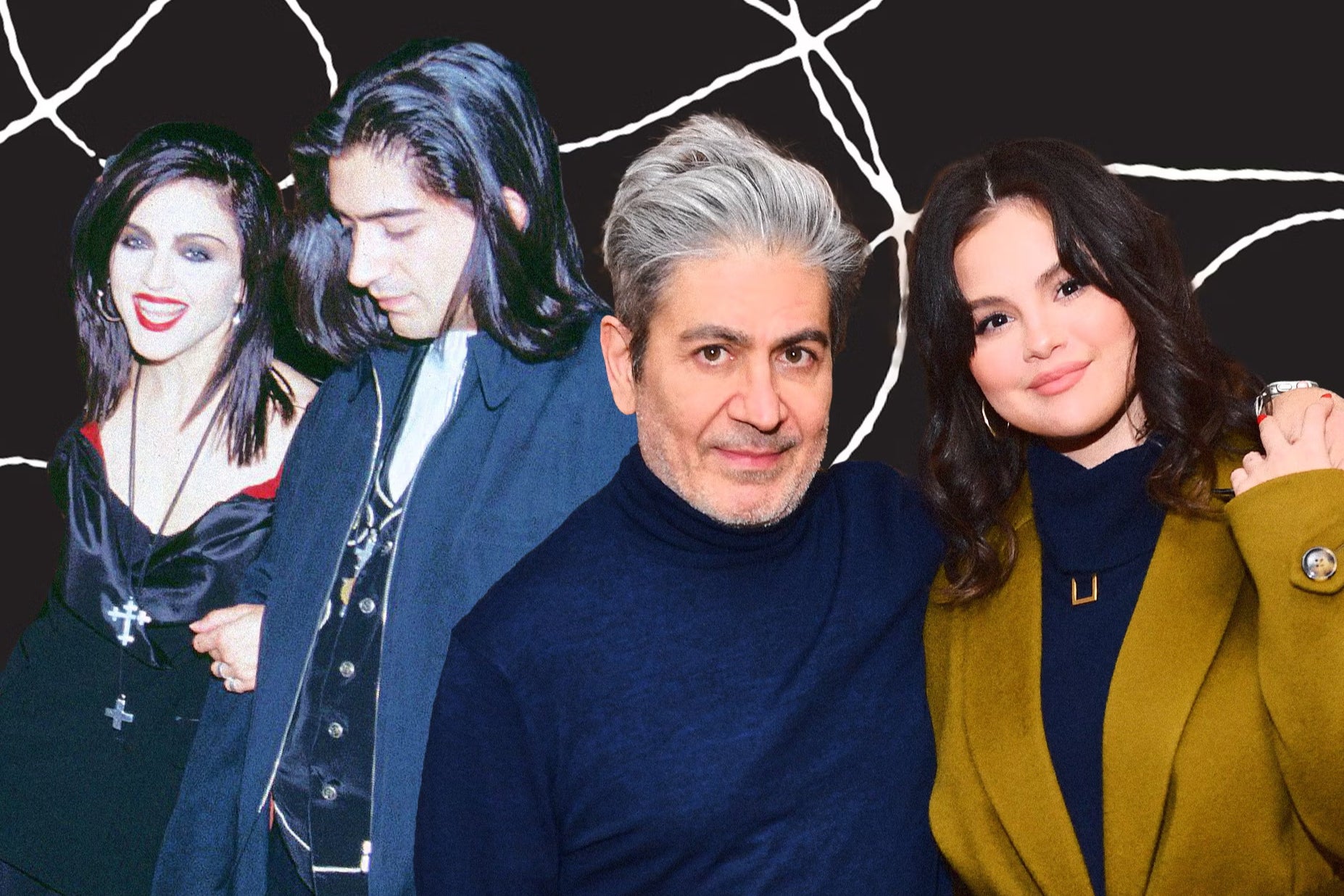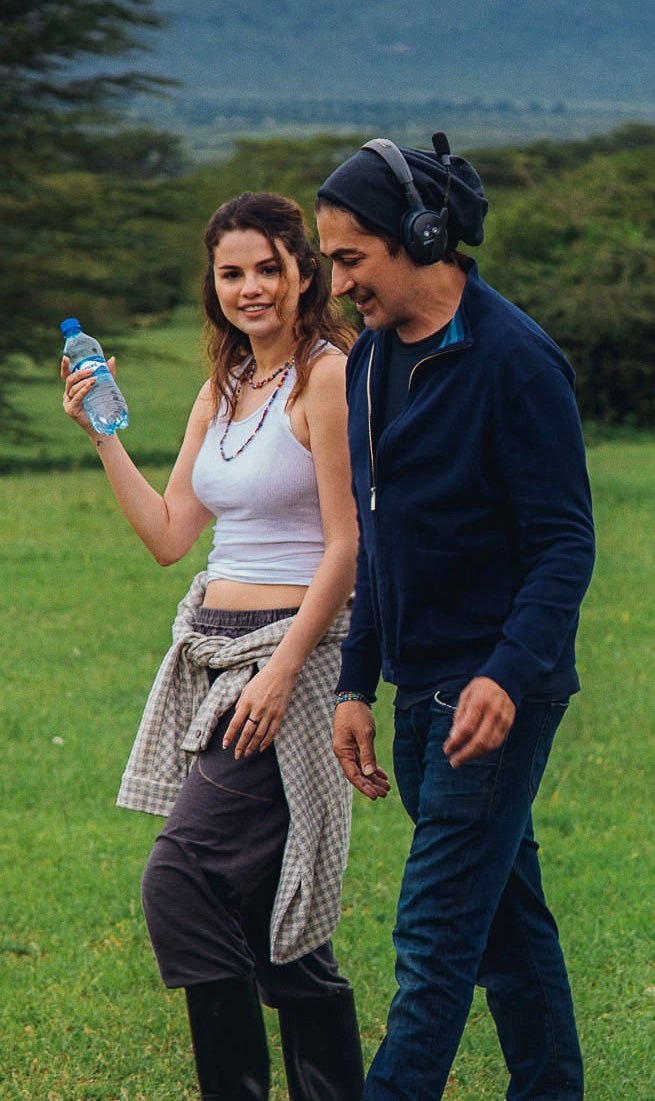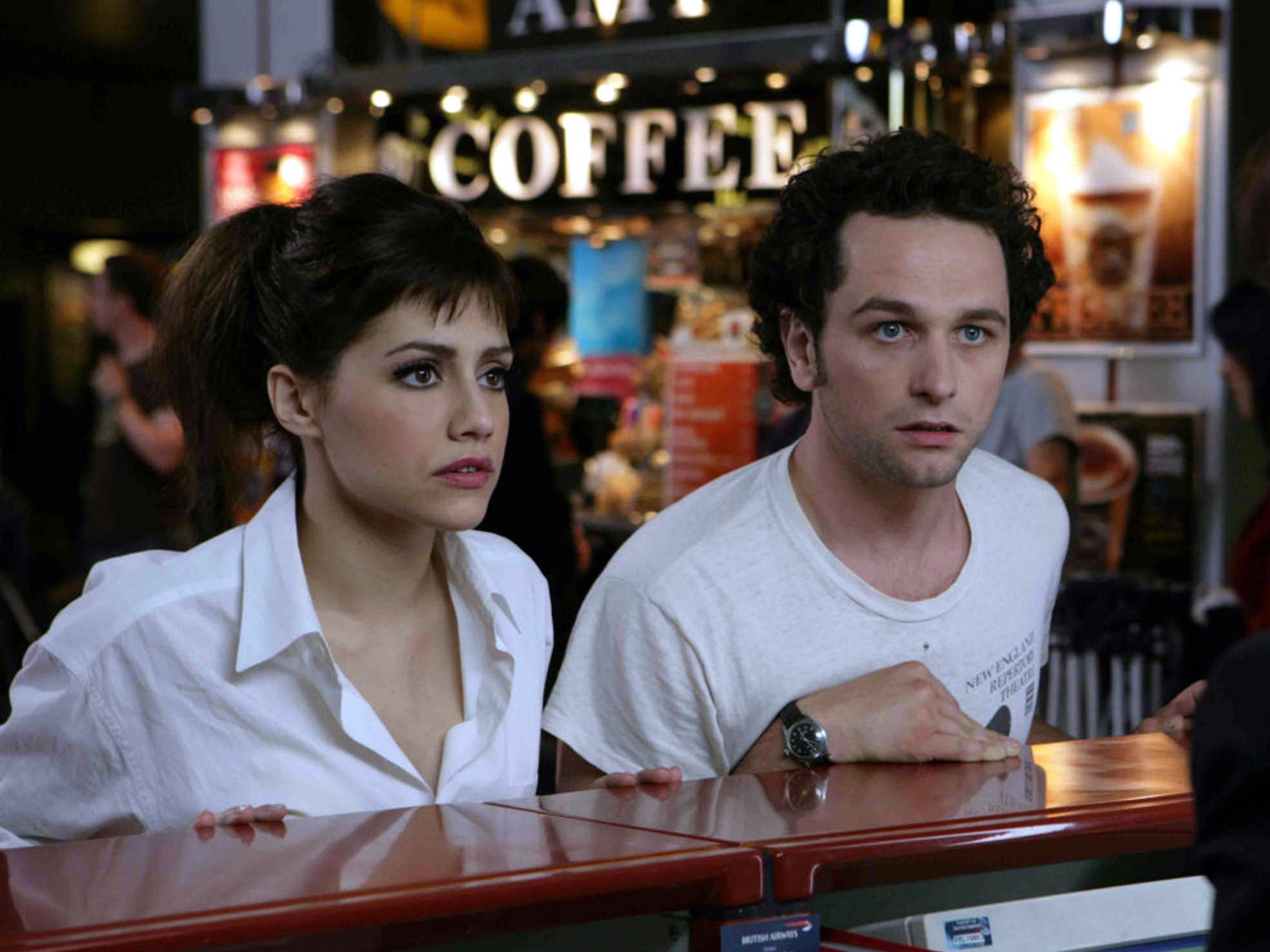‘Me and Madonna were inseparable – but it became too much’: Alek Keshishian on the art of documenting pop stardom
Thirty years after directing the influential Madonna documentary ‘Truth or Dare’, the filmmaker speaks to Adam White about fame, tragedy and his new Selena Gomez movie


Your support helps us to tell the story
From reproductive rights to climate change to Big Tech, The Independent is on the ground when the story is developing. Whether it's investigating the financials of Elon Musk's pro-Trump PAC or producing our latest documentary, 'The A Word', which shines a light on the American women fighting for reproductive rights, we know how important it is to parse out the facts from the messaging.
At such a critical moment in US history, we need reporters on the ground. Your donation allows us to keep sending journalists to speak to both sides of the story.
The Independent is trusted by Americans across the entire political spectrum. And unlike many other quality news outlets, we choose not to lock Americans out of our reporting and analysis with paywalls. We believe quality journalism should be available to everyone, paid for by those who can afford it.
Your support makes all the difference.In 1991, an often wincingly candid documentary about Madonna supposedly invented a genre. Truth or Dare, which was released in the UK as the decidedly more salacious In Bed with Madonna, is often described as the blueprint for the dozens of pop star docs that followed, from One Direction: This Is Us to Taylor Swift’s Miss Americana. But that’s false. For the most part, it stands alone. It’s the only pop star-approved pop star documentary that could justifiably send its subject’s publicists into a cold sweat. After all, none of Truth or Dare’s many imitators captured their stars fellating bottles of mineral water. Or being bitchy about Oprah. Or, as if they’re in a Mike Leigh tragicomedy, gently telling a long-forgotten childhood friend that, no, they won’t be godparent to their unborn baby.
Truth or Dare was shot over the course of Madonna’s 1990 world tour by a 24-year-old filmmaker named Alek Keshishian, and captures the star at her apex. Thrilling. Perplexing. Endlessly misbehaving. She’s someone for whom an “electric fence” sign is an invitation to touch rather than a warning. So, in other words, the total opposite of Selena Gomez, the 30-year-old Texan who’s been a pop sensation for most of her life. An actor, top 40 staple, former Disney kid, and the most followed woman on Instagram who isn’t a Kardashian, she is the subject of Keshishian’s new film, and his first documentary since Madonna’s. My Mind & Me, which is streaming on Apple TV+ now, is also about a giant pop supernova, but one who – deep down – can’t seem to stand it.
“Selena is the most reluctant pop star I’ve ever met,” Keshishian tells me over an ice water and e-cigarette in London’s Notting Hill, his eyes concealed by circular spectacles, his hair thick and grey. “Her stardom is not based on a cool factor,” he continues. “She’s the people’s pop star. What was intriguing to me is that she doesn’t seem to have that bravado. Madonna had that bravado, and she also had thick skin.” When Keshishian was first introduced to Gomez through his sister Aleen – who works as her manager – he was stumped. “I was like, ‘this girl doesn’t have thick skin’.”
In My Mind & Me, Gomez despairs at the treadmill she’s found herself on. We first see her at the age of 24, rehearsing for what she feels is a make-or-break world tour – sultry tracks like “Good for You” and “Hands to Myself” designed to break her out of teen-pop and into a more mature musical sensibility. But she’s in the grip of anxiety. She hates how she looks, how she performs on stage. A handful of subjects seem to trigger particular self-loathing: Disney, her image as a famous “ex-of” Justin Bieber, the (irrational) idea that she’s merely hoodwinked a record label and a fanbase and that she’s not actually very good at her job. Much of this footage is explained by what happens (off-camera) afterwards, with Gomez entering treatment to deal with panic attacks and depression, and receiving a diagnosis of bipolar. But as the years go by and Gomez comes to manage her mental health (on-camera), she seems happy and alive only when she’s not being a pop star. In Truth or Dare, Madonna’s relationship to attention was like someone hooked up to an intravenous drip. She thrived off it. Gomez’s comparative joylessness is palpable.
“There were many moments where I’d ask myself, ‘Why doesn’t she just stop?’” Keshishian says. “But there’s still that need in her to do it. I think she’s happiest when she’s acting. [She told me] that one of the reasons she loves acting – and especially in an ensemble piece – is that it’s not all about her. She finds the focus [being] on her quite embarrassing.” So why does she still do it? “I think if she didn’t, she would feel kind of lost. She’s been doing this since she was seven. Her management and her label are very protective of her. But I think she’s torn, because she feels an obligation to her fans. She enjoys the self-expression of music. She just doesn’t like the promotional aspect of it.”
Keshishian had no desire to document another pop star in his lifetime, having found a comfortable home working in advertising and scriptwriting, but Gomez was eager to collaborate with him. Like any good student of pop music, she adored Truth or Dare, and convinced him to direct one of her music videos and shoot footage of her concerts. Maybe it’d turn into something. Maybe it wouldn’t. But as Keshishian got to see her in action, he realised she wasn’t well. “I could sense the wheels were coming off,” he remembers. “I saw this girl going through a lot of pain. It felt exploitative for me to have cameras [there] while she’s in the thick of it.”

So, after those few weeks in 2016, he stopped rolling. In 2019, after Gomez got healthy and received her diagnosis – she also underwent a kidney transplant for the autoimmune disease lupus – she and Keshishian picked up where they left off, this time with a clearer goal in mind. Ultimately, My Mind & Me is about an incredibly famous person attempting to leverage her fame for good. It’s also, in Keshishian’s words, “an indictment of fame itself”.
There was a time, not long after Truth or Dare, when Keshishian himself was sort of famous. He’d been plucked out of relative obscurity by Madonna after she saw his Harvard thesis film, a rock-opera spin on Wuthering Heights, and she asked him to shoot her tour. He asked her if he could shoot the dramas, dynamics and love affairs backstage, too. (Warren Beatty, Madonna’s boyfriend at the time, hovers on the fringes of Truth or Dare like a ticked-off chunk of arm candy.) She acquiesced. The pair bonded, palling around throughout the Nineties. “I was Madonna’s best friend for six or seven years,” he says. “We were inseparable – but it became too much. It was great fun being with her at the time. But as you grow older, you get more mature, you start realising the emptiness of a lot of that. I did not like seeing my name in gossip columns. I’m just not that person. I hate being in front of the camera. So I got the f*** out of Hollywood.” He left Los Angeles – his base at the time – for London. “And then she turned around and moved to London too!” he laughs. “I was like, ‘I can’t get the f*** away from this woman!’”
The pair have worked together since – though never on a Truth or Dare sequel, which Keshishian has always expressed disinterest in – and remain friendly if not BFFs, most recently celebrating Rosh Hashanah at the same party in New York in September. For the most part he today admires her from afar, not that she’s ever made it easy for people to keep her out of their minds. “I always say she’s like the cool girl at the back of the school bus, controlling all the seats around her,” he laughs. “Had she not been a pop star, she’d still have been ‘that girl’. The one who walks into a room and everyone is fascinated. She’s always had this commanding presence. This charisma. I think the bar is a little lower these days.”

Watch Apple TV+ free for 7 days
New subscribers only. £8.99/mo. after free trial. Plan auto-renews until cancelled

Watch Apple TV+ free for 7 days
New subscribers only. £8.99/mo. after free trial. Plan auto-renews until cancelled
It wasn’t just Madonna that alienated him from celebrity. Inevitably, lines have been drawn from My Mind & Me back to Truth or Dare, but a missed connection is a largely unknown movie Keshishian directed in 2006. Love and Other Disasters was a romantic comedy shot in and around London starring Matthew Rhys, Catherine Tate and the late, great Brittany Murphy. It remains Keshishian’s last feature film and, until My Mind & Me, his last film altogether. He hasn’t spoken about it much. But I tell him that I was struck by its spiritual links to his two pop documentaries. Because of the women that lead them, they feel like – intentionally or not – reflections on fame. Madonna has always made stardom her bitch, Gomez has learned to make it survivable, and Murphy – a brilliant, haunting actor who experienced professional and personal turmoil before her death at the age of 32 in 2009 – was effectively killed by it.

“Brittany was an amazing light,” Keshishian says, sombrely. “But she had a lot of demons.” He calls Love and Other Disasters his worst experience in filmmaking. “I was making it in the city I loved, with an amazing crew and an amazing producer, but it was troubled. Because I had a troubled actress in the lead.” He could see on set that Murphy was struggling. “I was protective of her. I considered shutting down the movie, but that would have put 70 crew members out of work. So we carried on.” He shakes his head. “I think that affected me.”
I ask if his refusal to keep filming Gomez in 2016 had anything to do with what he saw happen to Murphy. “I think so,” he says. “You start realising movies are what you do – they’re not the be-all and end-all. That’s why in 2016, I was like, ‘This isn’t right – I don’t want to film this.’ Selena needed to live through that and hopefully get better and figure it all out. If I was still 24, I probably wouldn’t have stopped. I would have been, like, ‘Oh, this fascinates me – let’s just keep rolling.’ But I do hope that I’ve gotten wiser with age. I hope I’ve gotten more compassionate.”
Time has made him kinder, but it hasn’t made fame any less unappealing. “I once had all those trappings,” he says. “An assistant who’d give me my petty cash. Who’d do my grocery shopping. But it wasn’t real. It never felt right. I wouldn’t trade my life for any famous person’s.” Instead, he chooses to orbit them. While sometimes, but not often, holding a camera.
‘Selena Gomez: My Mind & Me’ is streaming on Apple TV+ now



Join our commenting forum
Join thought-provoking conversations, follow other Independent readers and see their replies
Comments